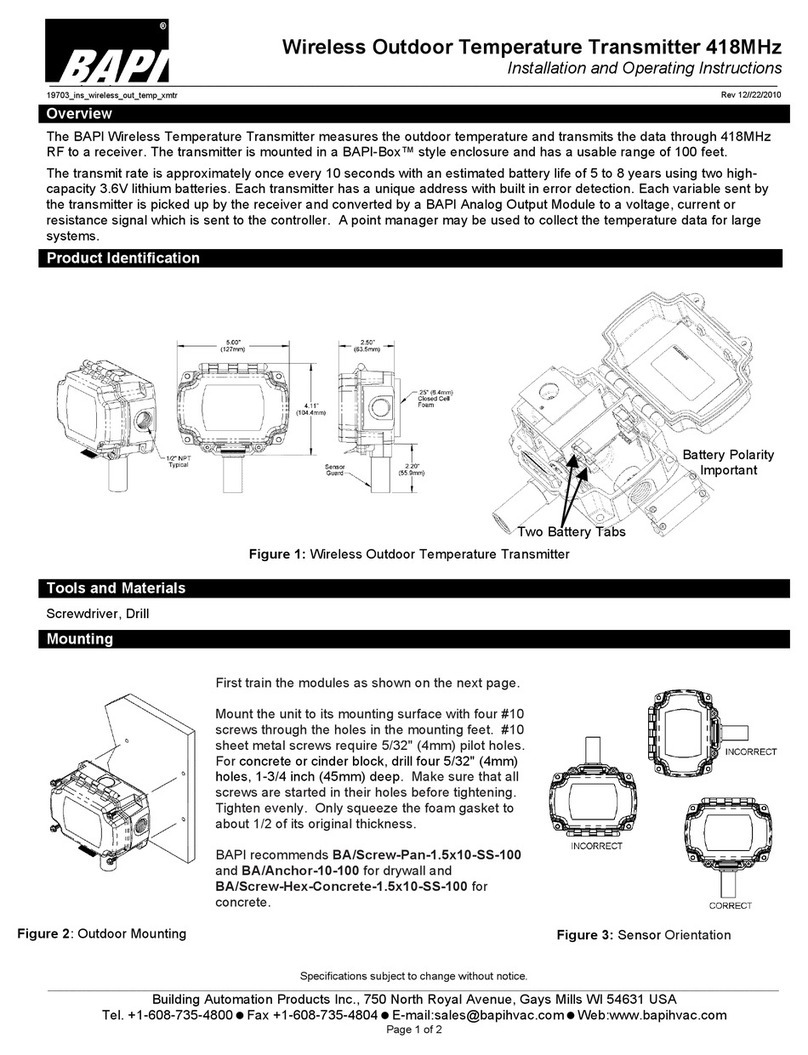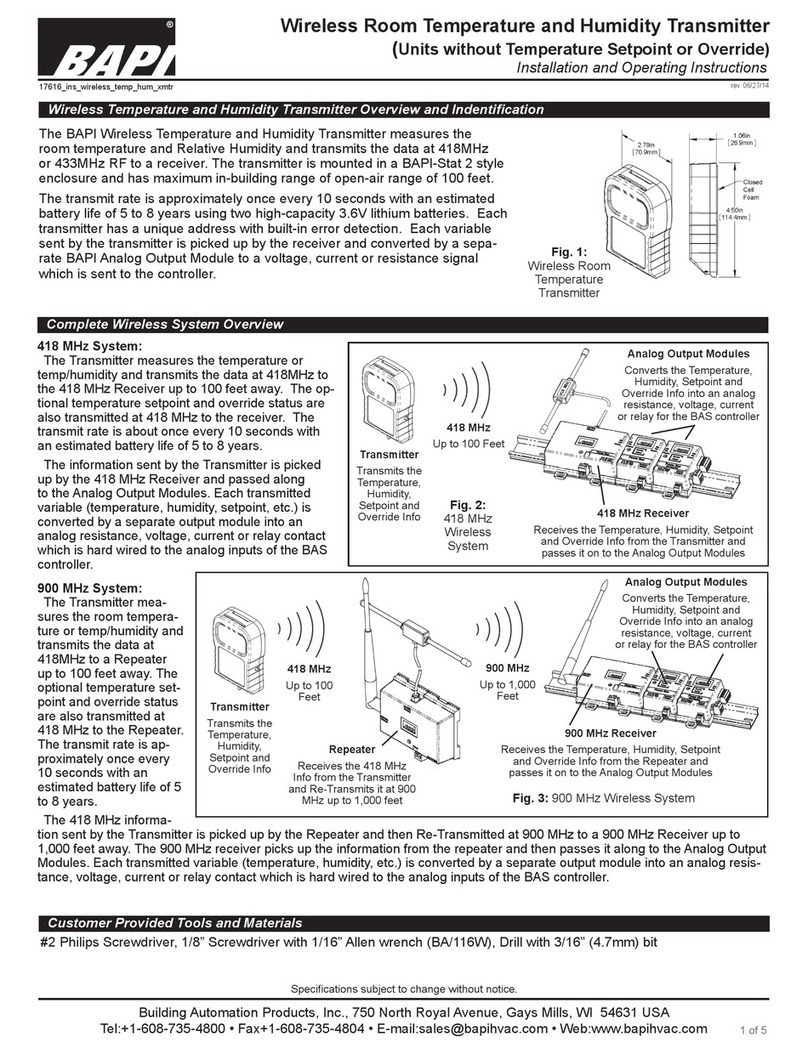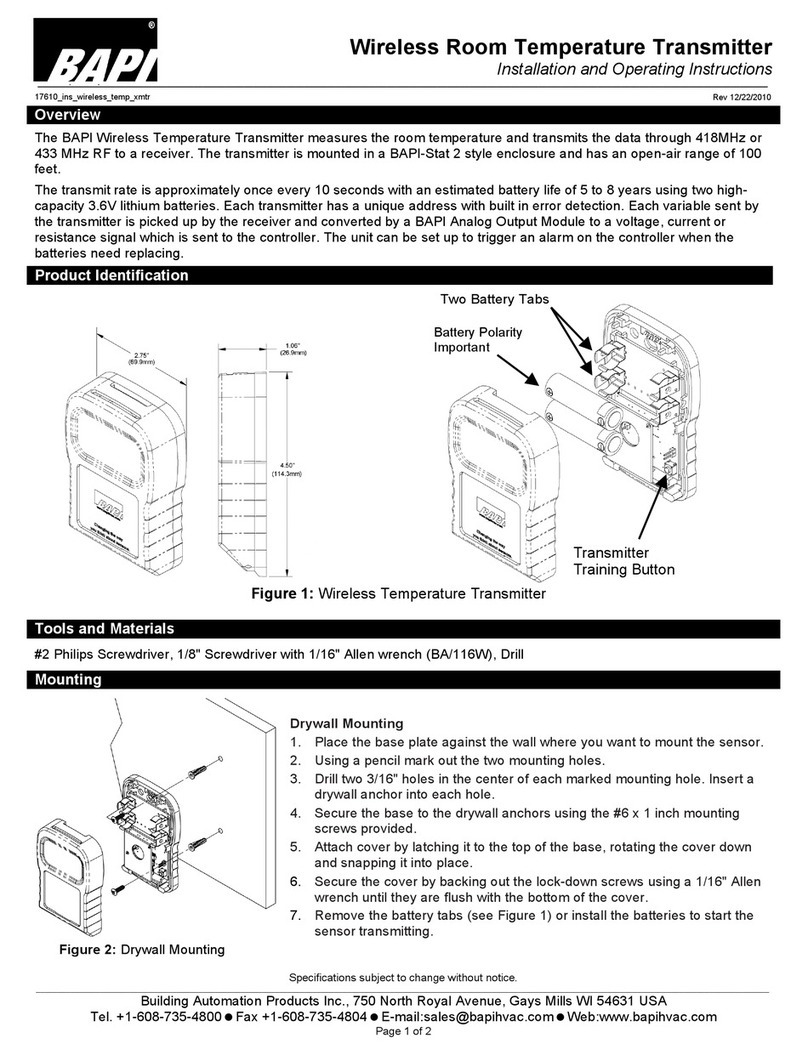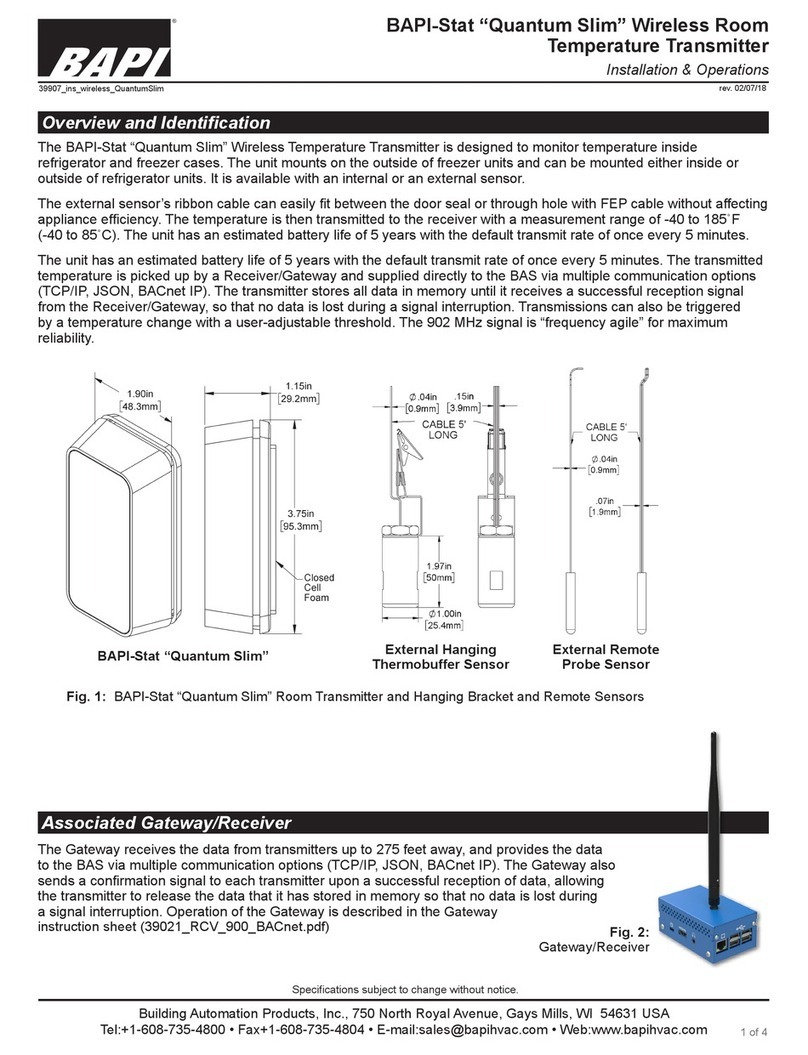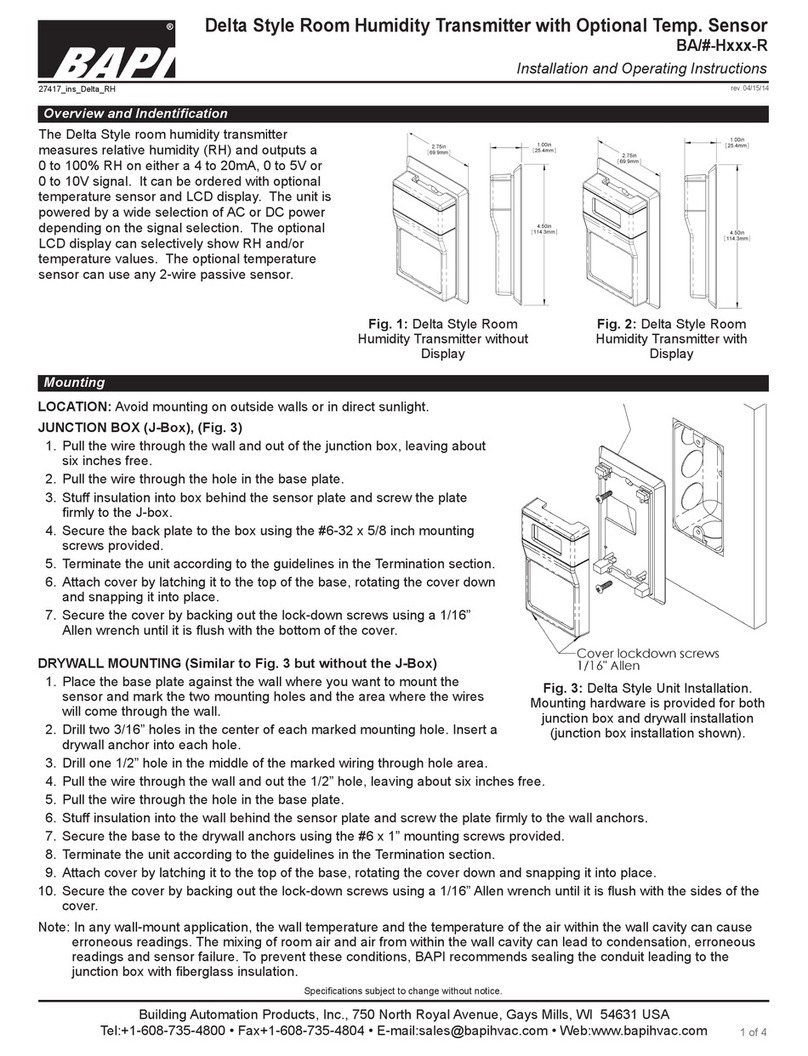
Installation and Operating Instructions
Duct and Outside Air Humidity (H200-H300)
4 to 20mA or 0 to 5V Humidity Output with Optional Temperature Sensor
Building Automation Products, Inc., 750 North Royal Avenue, Gays Mills, WI 54631 USA
T
el:+1-608-735-4800 • Fax+1-608-735-4804 • E-mail:
[email protected] • Web:www
.bapihvac.com
9938_ins_hum_temp_duct_out_5_20
3 of 4
rev. 02/15/18
Specications subject to change without notice.
Specications
Power:
10 to 35 VDC For 0 to 5 VDC or 4 to 20 mA Humidity Outputs
12 to 27 VAC For 0 to 5 VDC Humidity Output
Power Consumption:
22 mA max. DC For 0 to 5 VDC or 4 to 20 mA Humidity Outputs
0.53 VA max. AC For 0 to 5 VDC Humidity Output
Sensor: Factory corrected @17 RH points (10 to 90% RH)
Humidity Capacitive Polymer
RH Accuracy ±2% @ 73°F (23°C) from 10 to 90%
Drift 0.5% per year
Response time < 5 seconds in moving air
RH Linearity Negligible, factory corrected linear from 10 to 90%
RH Hysteresis Factory corrected to <1%
Opt. Temp. Passive RTD or Thermistor
Filter: 80 micron sintered stainless steel lter
Calibrated Accuracy: Calibration @17 RH points, (10% to 90%)
RH 2% 2% from 10 to 90% @ 73°F (23°C), Non-condensing
RH 3% 3% from 10 to 95% @ 73°F (23°C), Non-condensing
Thermistor ±0.36ºF (0.2ºC) from 32 to 158ºF (0 to 70ºC) - High accuracy units are available
RTD ±0.55ºF (0.31ºC) @ 32ºF (0ºC) - High accuracy units are available
Output: Selectable via wiring detail
Humidity 0 to 5VDC or 4 to 20mA at 0 to 100% RH
Opt. Temp. Resistance RTD or Thermistor
Humidity Output Impedance:
Current 700W@ 24VDC, Voltage drop is 10VDC
(Supply Voltage DC – Transmitter voltage drop 10VDC) / 0.02 Amps = Max load Impedance
Voltage 10KW
Probe Length:
Duct 5.3” (13.5cm) Duct Insertion, 1” diameter
Outside Air 2.4” (6.1cm) Below Enclosure, 1” diameter
Dimensions: W x H x D
Weatherproof (WP) 2.75” x 4.5” x 2.2”, (70 x 114 x 55 mm)
Weather Tight (EU) 4.1”x 3.8” x 2.1”, (105 x 97 x 54 mm)
BAPI-Box (BB) 4.15” x 5” x 2.5”, (105.4 x 127 x 63.5mm)
BAPI-Box 2 (BB2) 4.9” x 2.8” x 2.35”, (124.8 x 71.6 x 59.7mm)
Termination: Open wire
Crimp 18 to 26 AWG with Sealant Filled Crimp Connector (BA/SFC1000-x00)
Wire Nut 26 to 16 AWG with Sealant Filled Wire Nut (BA/SFC2000-x00)
Enclosure Material:
Weatherproof (WP) Cast Aluminum
Weather Tight (EU) ABS plastic, UV resistant
BAPI-Boxes (BB, BB2) Polycarbonate, UV resistant
Enclosures Ratings:
Weatherproof (WP) NEMA-3R
Weather Tight (EU) IP66, UL94V-0
BAPI-Boxes (BB, BB2) NEMA-4, IP66, UL94V-0
Environmental Operation Range: -40º to 158ºF (-40º to 70ºC) • 0% to 100% RH
Approvals: RoHs






